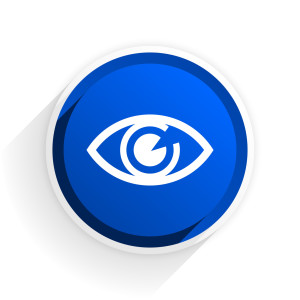How to Transfer Ownership of an iOS App
In June 2013, Apple made it possible for developers to transfer the ownership of iOS apps. This is great news for developers, because it makes it easier to sell your apps on marketplaces like Flippa, or even buy one that’s established to improve upon.
There are two steps involved in transferring an app:
- Transfer the ownership within Apple
- Transfer the code outside of Apple
Let’s begin by transferring the ownership within Apple.
Transfer the ownership within Apple
I’m going to assume that you already have an agreement with another party, and that you’re happy to go through with the transfer. The transferor must have agreed to the master agreement, and your developer account must not be in the middle of a migration process.
Only the team agent with the Apple ID and Team ID can initiate and complete the transfer. If that describes you, then visit your iTunes Connect Panel, and press the Transfer App button to send your request to Apple. At this stage, you will be notified if your app meets the requirements for a transfer. Currently, the following criteria apply:
Transferable States
Your app needs to be in a transferrable state. Apple considers the following states transferable:
- Pending Contract
- Prepare for Upload
- Developer Removed from Sale
- Invalid Binary
- Developer Rejected
- Rejected
Your In-App purchases must also be in a specific state. Apple supports the following states:
- Approved
- Ready to submit
- Developer Removed from Sale
- Rejected
Other important restrictions
You can’t transfer an app that runs on a subscription, like magazine apps. This includes apps that have auto-renewal subscriptions, free subscriptions and non-renewing subscriptions set up for their in-app purchases. Apps that use iCloud and Passbook entitlements can’t be transferred either.
Does your app meet the criteria? If that’s the case, then you will be able to go through with the transfer. You’ll want to check the iTunes Connect Developer Guide to stay up to date with the latest guidelines.
Transfer time
When you have sent the transfer request, the recipient has up to 60 days to sign into iTunes Connect and accept the offer. Once it has been accepted, Apple takes about two business days to complete the transfer. After this period, the app will no longer appear in the transferor’s account.
The app’s users won’t be affected by the transfer. They will still be able to download the app as usual, and view the ratings and reviews. The app’s chart position will also be retained.
Congratulations! The first part of the transfer is now completed. For the second part, you need to share the code with the new owner and their team, so they can continue to build and maintain the app.
Transfer the code
But how do you give the new owner access to the code? The most popular option is to transfer a GitHub repository. This allows you to safely share your code with the new owner. Since this process is initiated by you, there’s no waiting or approval time.
To move the GitHub repository, you need to be an administrator of the account. If you are already an administrator, then take the following steps:
- Log in to your GitHub repository page.
- Select “Settings” in the repository action bar.
- Click “Transfer”.
- Read the warnings and heed them well. Enter the repository name to confirm that you’ve done this.
- Enter the GitHub username of the new owner and click “I understand, transfer this repo”.
GitHub repository requirements
Having problems with your Github transfer? Your GitHub repository can only be moved if it meets certain requirements. Here are a few of the most common problems:
- Does your target account have a repository with the same name, or a fork in the same network? Remember to change it first.
- Is this repository private? Make sure that the target account has a paid account with at least one private repository available.
- Are you trying to transfer private forks? Only private root repositories can be transferred.
If you follow the requirements above, you should be able to transfer your GitHub repository straight away. Once you’ve given the ownership and the code to the new owner, you will have officially transferred your first iOS app.
In Closing…
The volume of iOS apps being created and sold is increasing dramatically, and this number is likely to grow even more with Apple’s simple transfer process. Apps remain a valuable business asset, but now they can finally change hands.
Have you transferred any apps lately or do you plan to do so in the future? Please let us know your thoughts in the comments.
Frequently Asked Questions about Transferring Ownership of an iOS App
How can I ensure a smooth transfer of my iOS app to a new owner?
To ensure a smooth transfer of your iOS app to a new owner, you need to prepare adequately. This includes ensuring that all agreements, tax, and banking information are complete in App Store Connect. Also, ensure that the app has no outstanding or unresolved issues such as legal disputes or violations of App Store policy. Lastly, the app should not be using any iCloud entitlements or Push Notifications, as these cannot be transferred.
What happens to the app’s ratings and reviews after the transfer?
After the transfer, all ratings and reviews of the app will be retained. This is because they are tied to the app’s Apple ID and not the developer’s account. Therefore, the new owner will inherit all the app’s historical data, including its ratings and reviews.
Can I transfer an app that is part of a Volume Purchase Program?
No, apps that are part of a Volume Purchase Program cannot be transferred. If your app is part of this program, you will need to remove it before initiating the transfer.
What happens to the app’s in-app purchases after the transfer?
All in-app purchases are transferred along with the app. However, the new owner will need to set up their own in-app purchase products in App Store Connect.
Can I transfer an app that uses Game Center?
Yes, an app that uses Game Center can be transferred. However, the new owner will need to set up their own Game Center in App Store Connect.
What happens to the app’s users after the transfer?
After the transfer, all existing users of the app will continue to have access to the app. They will not be affected by the transfer and will not need to take any action.
Can I transfer an app that uses TestFlight?
Yes, an app that uses TestFlight can be transferred. However, the new owner will need to set up their own TestFlight in App Store Connect.
Can I transfer an app that uses iCloud?
No, apps that use iCloud cannot be transferred. If your app uses iCloud, you will need to remove this feature before initiating the transfer.
Can I transfer an app that uses Apple Pay?
Yes, an app that uses Apple Pay can be transferred. However, the new owner will need to set up their own Apple Pay in App Store Connect.
Can I transfer an app that uses SiriKit?
Yes, an app that uses SiriKit can be transferred. However, the new owner will need to set up their own SiriKit in App Store Connect.
Olle Lindholm works at Flippa, a marketplace where you can buy and sell apps, domains and websites.
Published in
·Design·Design & UX·Illustration·Photography & Imagery·Photoshop·Resources·Software·UX·August 25, 2015


